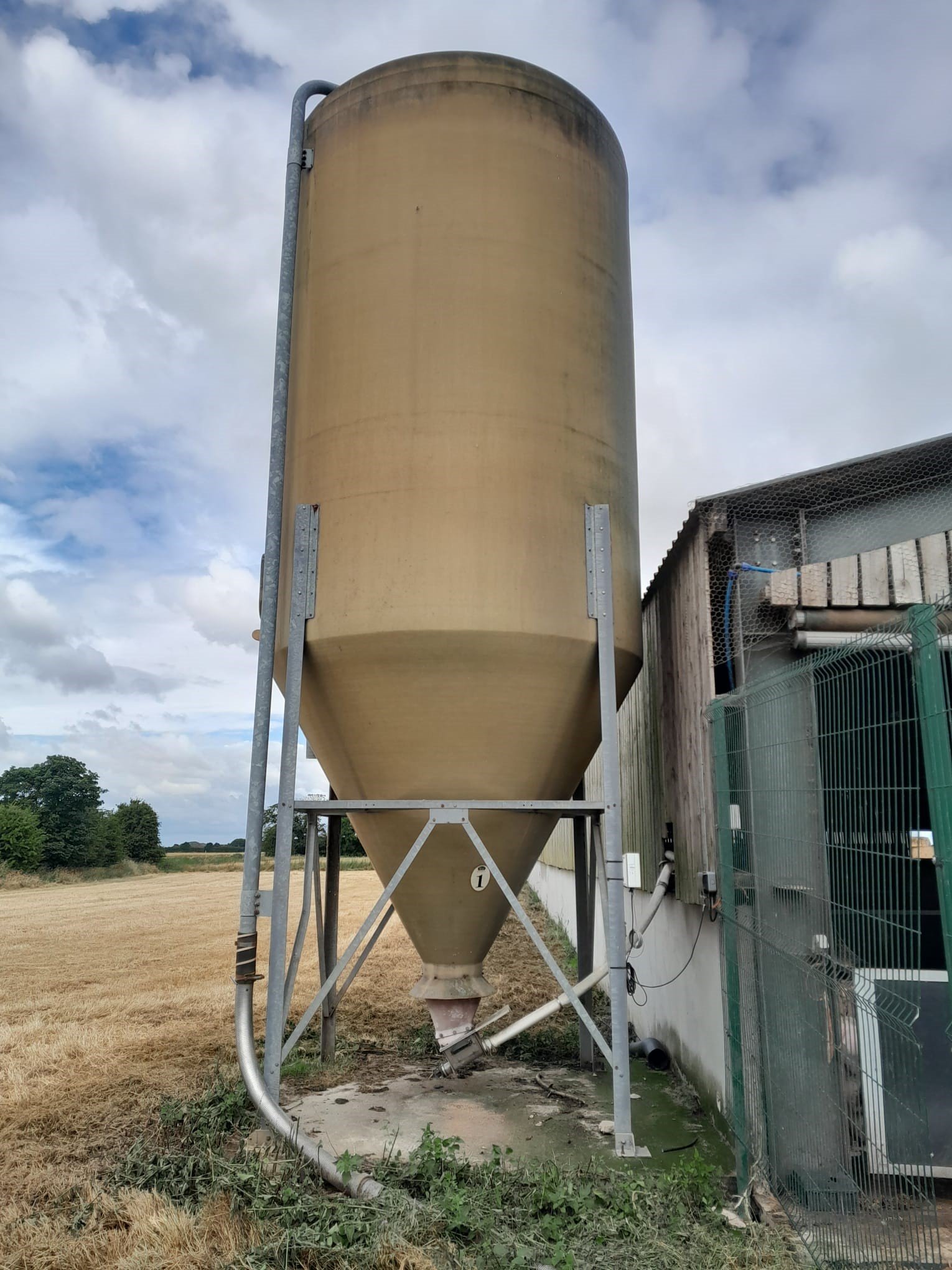Better feed management, less work and an improved FCR
Mark Galtrey finishes pigs for Wold Farms at his 1800 pig unit at Far Field, Yorkshire. Mark has four silos for feed storage, two fibre glass and two steel, feed management has always been a challenge as the steel silos only have two Perspex level indicators which can often be dusty and the fibre glass silos have gone opaque, so they can only actually see how much feed is in the silo when the sun is shining and unfortunately the sun doesn’t always oblige, especially during the winter!
At the end of a batch the team would try to run the finisher 3 feed down to a minimum ready for the finisher 1 to go into the silo for the new batch of pigs and if collection date moved or they’d misjudged levels they’d put finisher 1 on top. Mark knew this wasn’t ideal and, in an effort to make life easier and improve the FCR Mark decided to investigate silo monitoring to get a greater control of the feed management.
Mark spoke to Collinson about FeedAlert inventory control and decided to buy two of the lowest cost systems at £450 each, low-cost silo monitoring is a relatively new concept in the UK and Mark wanted to see how it performed before investing in four units.
Another challenge they faced at Far Field is that geographically they are located close to the feed mill, feed was often warm when it was blown into the silo, this resulted in a build-up of feed on the sides of the silo and periodically one of the team would have to empty and clean the silo, removing the build-up of waste feed off the sides of the silo.
To give the systems the best possible chance to optimum accuracy, which Collinson said should be within 5% of full capacity, Mark decided to empty the silos and clean them.
At the time, Mark estimated that there was circa 12tonnes between the four silos, when they unloaded all four there was almost 40 tonnes! ‘that spoke volumes to me, I was 28t out on my guess’ said Mark, ‘I knew then that if this worked it was a winner for me’.
Once empty and clean, the systems were fitted, set-up consisted of zero’ing the empty silo, it was then calibrated to the delivered weight shortly after filling, this then sets the scale for going forward.
Mark had downloaded the App so he could check feed levels via his phone. They worked a treat, impressed Mark invested in a further two units so they could monitor all the silos at Far Field. Mark checked feed levels every morning on the app, sharing the data with his team. This enhanced management as it didn’t matter where or when Mark wanted the data, he could access it 24/7, so easy.
Now, a number of batches on, Mark is thrilled at the benefits they’ve seen,
‘it’s not just about knowing how much feed is in the silo, which in itself is great’ he told us, ‘It gives us better feed management all round’
Mark explained ‘knowing how much is in each silo means we can top up each as needed to keep at an even level, we now keep a maximum of 8t in each, since we’ve been doing this there’s been no build up on the sides of the silo, the feed flows better and stays fresher.
Regarding the actual feed management, Mark said
‘We have so much more control, we’ve been able to run finisher 3 down to between 400 – 900kg on each silo at the end of a batch, so the new pigs are straight on to finisher 1 to get that all important nutrient intake, for optimum growth’.
The result, better feed management, less work and an improvement on the FCR – mission, well and truly accomplished!


